Last week, MikeF, a friend from work, took me as a guest to the Snoqualmie Valley Rifle Club. If you’ve ever driving up to Snoqualmie Falls from Fall City, there’s a big hairpin corner before you wind your way up the hill to the falls. There’s a small dirt road with a gate that leads off the outside of that corner, and at the end of the road is the gun club. The grounds aren’t very fancy, but they’re a lot of fun. The rifle range is 200 yards long and the pistol range is about 50. There is also an action pistol area for competitions if the rest of the range is shut down. There’s no rangemaster and everyone present is responsible for safety. If you want to go out and set up your targets, you get everyone to agree to a cease fire and flip a switch that activates a loud siren and flashing lights.
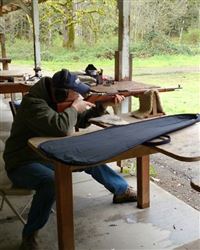 The nice thing about the club is that it’s very informal. You shoot what you want at what you want as long as you are being safe and you clean up after yourself. While I love shooting trap at the Kenmore range, their rifle/pistol range is extremely restrictive. The biggest annoyance at Kenmore is that you can only put one round in your gun at a time. The Snoqualmie club has no such restriction.
The nice thing about the club is that it’s very informal. You shoot what you want at what you want as long as you are being safe and you clean up after yourself. While I love shooting trap at the Kenmore range, their rifle/pistol range is extremely restrictive. The biggest annoyance at Kenmore is that you can only put one round in your gun at a time. The Snoqualmie club has no such restriction.
Mike let me shoot his newly refinished 1891/30 Mosin Nagant. It’s a bolt-action, internal magazine rifle developed by the Russian army in the late 1800s and used through both world wars. In fact, there are still a lot of them in use today. Mike’s gun was made in 1943 and came with the original bayonet and the kit that the soldier would have carried. There are so many of these guns floating around that you can pick one up for under $150. It shoots 7.62x54mmR ammo which is pretty big. It’s just over three inches long and there’s no mistaking what’s going on when you pull the trigger. He hadn’t done anything to sight in the gun yet, but we were having good luck with it shooting a paper target at 50 yards and we were even able to hit a metal torso out at 200 yards without much trouble.
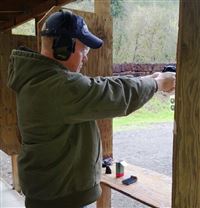 He also brought his sub compact 9mm Ruger with a 13 round magazine. I’ve only shot a handgun once in my life so it was fun to give it another shot (pun intended.) We didn’t win any awards for accuracy but we blew through a couple boxes of ammo.
He also brought his sub compact 9mm Ruger with a 13 round magazine. I’ve only shot a handgun once in my life so it was fun to give it another shot (pun intended.) We didn’t win any awards for accuracy but we blew through a couple boxes of ammo.
Even with the downpour while we were packing up, it was a great day. We met some great people at the range and I left wanting to join. They only offer signups once per month and I’m booked for the next 2-3 months on those days, but after that I hope to join. I don’t have a rifle or pistol yet, but that’s going to change before much longer. I’m looking to pick up a .22 handgun. The Browning Buck Mark Camper UFX and Ruger Mark III Standard are the top contenders right now. Sure it’s not the most manly gun, but ammo is cheap so it’s a good way to practice. If you buy in bulk, a .22 round is a little over 4 cents. A 9mm is about 45 cents per round.
But then again, that Mosin was a lot of fun to shoot and it’s pretty cheap. Maybe I need one of those too.
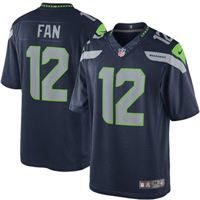 A couple weeks ago, TimS told me about a website that sells NFL jerseys for really cheap. They come from China so it’s a good bet that they are unlicensed. There seem to be a lot of websites that do this but the one we looked at was UnboxingJerseys.com. They have tons of jerseys from lots of sports. I even found an old school Ryne Sandberg Cubs jersey on there. Lots of the jerseys are available for $20.
A couple weeks ago, TimS told me about a website that sells NFL jerseys for really cheap. They come from China so it’s a good bet that they are unlicensed. There seem to be a lot of websites that do this but the one we looked at was UnboxingJerseys.com. They have tons of jerseys from lots of sports. I even found an old school Ryne Sandberg Cubs jersey on there. Lots of the jerseys are available for $20.
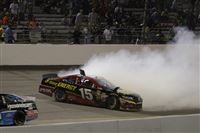 After the first 26 races in the NASCAR season, 12 drivers are chosen to compete in the “Chase” which basically is NASCAR’s 10 race version of playoffs. The specifics of how those drivers are chosen are a bit tricky but basically it’s the top 10 drivers in points and then two wild cards. My favorite driver, Ryan Newman, was right on the bubble for the last wild card position. Lap by lap the standings would change and he’d move in and out of the chase. With the race winding down, Newman was driving his heart out and had pulled into the lead. A victory would have guaranteed that he beat out Martin Truex, Jr for a spot in the chase. With just a few laps remaining, Truex’s teammate Clint Bowyer was told over the radio that Newman was going to win the race. Then they asked Bowyer, who had poison oak on his hand, how his hand was feeling. “Is your arm starting to hurt? I bet it’s hot in there. Itch it.” At that point, Bowyer spun bringing out a caution. After the pit stops, Newman was no longer in the lead, didn’t win, and Truex got into the Chase on a tie-breaker with Newman.
After the first 26 races in the NASCAR season, 12 drivers are chosen to compete in the “Chase” which basically is NASCAR’s 10 race version of playoffs. The specifics of how those drivers are chosen are a bit tricky but basically it’s the top 10 drivers in points and then two wild cards. My favorite driver, Ryan Newman, was right on the bubble for the last wild card position. Lap by lap the standings would change and he’d move in and out of the chase. With the race winding down, Newman was driving his heart out and had pulled into the lead. A victory would have guaranteed that he beat out Martin Truex, Jr for a spot in the chase. With just a few laps remaining, Truex’s teammate Clint Bowyer was told over the radio that Newman was going to win the race. Then they asked Bowyer, who had poison oak on his hand, how his hand was feeling. “Is your arm starting to hurt? I bet it’s hot in there. Itch it.” At that point, Bowyer spun bringing out a caution. After the pit stops, Newman was no longer in the lead, didn’t win, and Truex got into the Chase on a tie-breaker with Newman.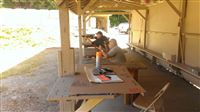 Logan and I grabbed our temporary badges and headed to the Snoqualmie Valley Rifle Club with Don for our first shots as members. Being a Saturday, I expected it to be swamped with people. There was a hunter safety class between 9 and 3 so we arrived at 3 and found a nearly empty range. In fact, over the 2+ hours that we were there, we had the range to ourselves for a good chunk of it.
Logan and I grabbed our temporary badges and headed to the Snoqualmie Valley Rifle Club with Don for our first shots as members. Being a Saturday, I expected it to be swamped with people. There was a hunter safety class between 9 and 3 so we arrived at 3 and found a nearly empty range. In fact, over the 2+ hours that we were there, we had the range to ourselves for a good chunk of it.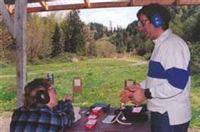 There’s a small shooting range at the bottom of the hill on 202 leading up to Snoqualmie Falls. You’ve probably driven by it numerous times and never noticed the dirt road leading off into the woods. MikeF took me there as a guest a few months ago and I’ve been trying to find time to join the club ever since.
There’s a small shooting range at the bottom of the hill on 202 leading up to Snoqualmie Falls. You’ve probably driven by it numerous times and never noticed the dirt road leading off into the woods. MikeF took me there as a guest a few months ago and I’ve been trying to find time to join the club ever since.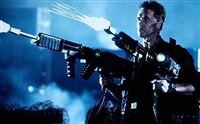 As I’ve started to get more involved in shooting sports over the last couple years, I’ve been thinking about why people view it any differently than golf. Whether you go to a gun range or a country club, you’ll be surrounded by retirees joking around and having fun. It’s a very similar environment. Somebody could use either a golf club or a gun to kill you, but most people don’t have an irrational fear of golf clubs. Why?
As I’ve started to get more involved in shooting sports over the last couple years, I’ve been thinking about why people view it any differently than golf. Whether you go to a gun range or a country club, you’ll be surrounded by retirees joking around and having fun. It’s a very similar environment. Somebody could use either a golf club or a gun to kill you, but most people don’t have an irrational fear of golf clubs. Why?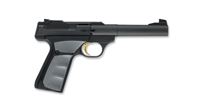 While I’ve sent quite a few rounds through both a rifle and a shotgun, I haven’t spent much time with handguns. I decided to add one to my collection but which one to buy? I ended up with a
While I’ve sent quite a few rounds through both a rifle and a shotgun, I haven’t spent much time with handguns. I decided to add one to my collection but which one to buy? I ended up with a 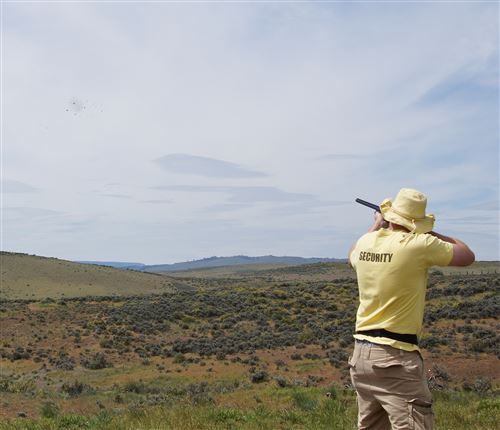
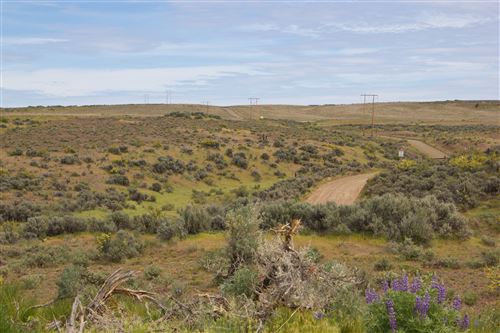
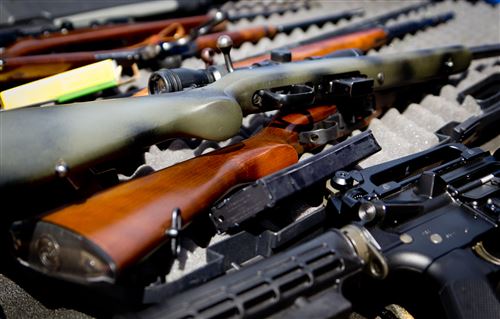
 The nice thing about the club is that it’s very informal. You shoot what you want at what you want as long as you are being safe and you clean up after yourself. While I love shooting trap at the Kenmore range, their rifle/pistol range is extremely restrictive. The biggest annoyance at Kenmore is that you can only put one round in your gun at a time. The Snoqualmie club has no such restriction.
The nice thing about the club is that it’s very informal. You shoot what you want at what you want as long as you are being safe and you clean up after yourself. While I love shooting trap at the Kenmore range, their rifle/pistol range is extremely restrictive. The biggest annoyance at Kenmore is that you can only put one round in your gun at a time. The Snoqualmie club has no such restriction. He also brought his sub compact 9mm Ruger with a 13 round magazine. I’ve only shot a handgun once in my life so it was fun to give it another shot (pun intended.) We didn’t win any awards for accuracy but we blew through a couple boxes of ammo.
He also brought his sub compact 9mm Ruger with a 13 round magazine. I’ve only shot a handgun once in my life so it was fun to give it another shot (pun intended.) We didn’t win any awards for accuracy but we blew through a couple boxes of ammo.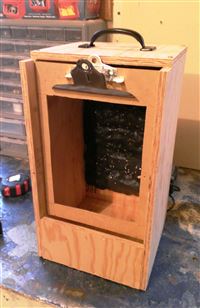 Mom and Dad got me a great
Mom and Dad got me a great 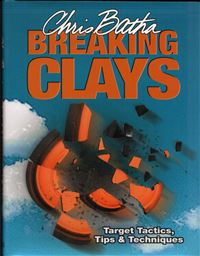 I picked up a copy of
I picked up a copy of